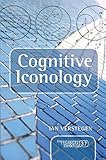Cognitive iconology : when and how psychology explains images / Ian Verstegen.
Material type: TextSeries: Publication details: Amsterdam : Editions Rodopi, (c)2014.Description: 1 online resource (188 pages) : illustrationsContent type:
TextSeries: Publication details: Amsterdam : Editions Rodopi, (c)2014.Description: 1 online resource (188 pages) : illustrationsContent type: - text
- computer
- online resource
- 9789401210706
- 9401210705
- 9042038241
- 9789042038240
- BF410 .C646 2014
- COPYRIGHT NOT covered - Click this link to request copyright permission: https://lib.ciu.edu/copyright-request-form
| Item type | Current library | Collection | Call number | URL | Status | Date due | Barcode | |
|---|---|---|---|---|---|---|---|---|
 Online Book (LOGIN USING YOUR MY CIU LOGIN AND PASSWORD)
Online Book (LOGIN USING YOUR MY CIU LOGIN AND PASSWORD)
|
G. Allen Fleece Library ONLINE | Non-fiction | BF410 .384 2014 (Browse shelf(Opens below)) | Link to resource | Available | ocn881568340 |
Browsing G. Allen Fleece Library shelves, Shelving location: ONLINE, Collection: Non-fiction Close shelf browser (Hides shelf browser)
Cover; Title Page; Copyright Page; Contents; Preface; Introduction:; Toward a Cognitive Iconology; The New Two Cultures; Cognition + Iconology; Psychology -- What's to Fear?; Structure of the Book; Chapter 1; Cognitive Iconology: Understanding versus Explanation; Arnheim's Woes; An Example: Cross-Cultural Perception; What does it mean to Explain Something?; Ontological Priority; Epistemic Priority; Against Conflation; Downward Conflation; Separating Sociology from Psychology; The Proper Place of Cultural Analysis; What is Left Over once Society is Extracted?; Upward Conflation.
Separating Biology from PsychologyThe Proper Place of Biological Analysis; What is Left Over once Biology is Extracted?; Stratified Explanation and Cognitive Glue; Chapter 2; Fiction and Transcription: Two Ecologies of Perception; Linear Perspective; Drawing and the Naive Theory of Mind; Two Ecologies of Perception; The Ecology of Standard Graphic Communication; The Ecology of Transcriptive Perspective; Chapter 3; A Classification of Perspective ""Corrections"" in Images; The Judgment of the Eye; From Prospectiva Naturalis to Good Form; Human Figures; Representing Architecture.
Relating Space to ViewerCorrections and Distortions; Chapter 4; Presence over Perspective: Portraits-in-Pictures; Curious Images; Perspective and Meta-Painting; Occasions for Portraiture; The Image without Presence; The Image with Presence; Problems of Reality in Virtual Portraits Parallelto the Picture Plane; Presence, Absence and Perspective; Chapter 5; Oblique Images from the Side and Below; The Problem; Discovering Oblique Viewing; The Phenomenon Clarified; Distinguished from Anamorphism; Distinguished from Robust Perspectives; Three Levels of Site-Specificity.
Viewing Pictures from the SideViewing Pictures from Below; Oblique Perception and Cultural Explanations; Chapter 6; Acting Irrational around Art; Are Objects Alive?; A Real Complementary Solution: Cognitive Glue; Similarity and Contagion; Similarity and Contagion with Images; Witnessing Miraculous Behavior; Iconoclasm; Society: The Focalizer; Conclusion; Cognitive Proclivities for the Study of Art; Tendencies are Not Probabilities; Gestalt Theory as Mediator; Bibliography; Index.
Cognitive Iconology is a new theory of the relation of psychology to art. Instead of being an application of psychological principles, it is a methodologically aware account of psychology, art and the nature of explanation. Rather than fight over biology or culture, it shows how they must fit together. The term "cognitive iconology" is meant to mirror other disciplines like cognitive poetics and musicology but the fear that images must be somehow transparent to understanding is calmed by the stratified approach to explanation that is outlined. In the book, cognitive iconology is a theory of co.
Includes bibliographies and index.
COPYRIGHT NOT covered - Click this link to request copyright permission:
There are no comments on this title.







